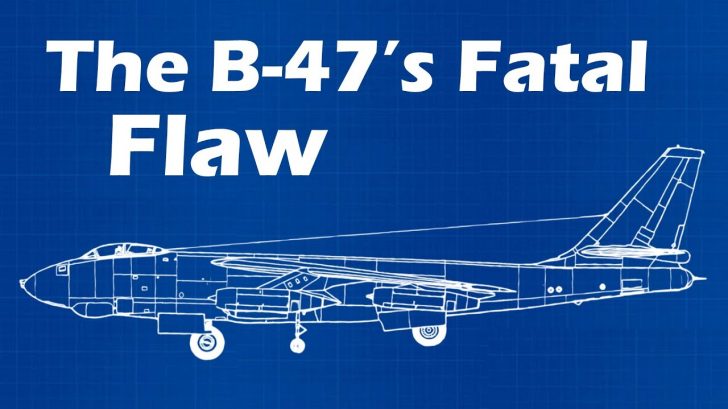On paper, the B-47 was the most technologically advanced bomber the Allies possessed at the time. With six powerful jet engines, swept-back wings, and a top speed of 607 mph, the Boeing Stratojet had all the necessary characteristics to become America’s next premiere strategic bomber. However, like any other aircraft, the B-47 had a fatal flaw. This one, however, was so terrible it was hidden from their own crew members.
“Random” Explosions
Seemingly out of nowhere, a few American B-47s began exploding mid-air without any enemy contact. The explosions happened all over America, and nobody knew the cause of them.
The US Air Force apparently already knew what was causing the crashes, but the Pentagon decided not to tell the B-47 crewmembers just yet. News of American nuclear-capable bombers randomly exploding during flight could have easily tempted the Soviet Union to do something out of the ordinary.
Unveiled To The Public
It was the 10th of April, 1958. A KC-97G tanker was circling over Lake Eerie, waiting for a B-47 coming out of Lockbourne AFB, Ohio. The two planes established radio contact and began the refueling process, but after the tanker’s pilot gave his final correction to the Stratojet, the transmission broke off.
The KC-97G’s crew was initially confused until the silence was broken.
“He just blew up. Right behind us.”
The crew saw two fireballs slowly looping down toward the ground as they quickly searched the skies for any parachutes. The wreck fell near a highway with no survivors.
Bandaid Solutions
Both planes were doing something routine, so what went wrong? Just five days later, two more B-47s exploded mid-air. Ten days later and another erupted.
The US Air Force quickly deployed a speed ban for all B-47s, instructing them to fly at less than 2/3 of their maximum speed. Despite this change, another B-47 was reported to have exploded. A new limit was instated as a result, now at 50% speed. By then, the B-47 was flying almost as slow as the B-29, the aircraft it intended to replace.
Declassified Information
It wasn’t until the 1980s that the previously classified information would be revealed to the public. They found that these incidents have been happening since 1951, and a total of 58 B-47s would explode in the same manner, taking down 174 lives with it.
It was also revealed that the Strategic Air Command decided that the B-47 was already obsolete in 1957. The aircraft’s low ceiling and slow speed were not enough to penetrate the ever-evolving radars and anti-aircraft defenses used by the Soviet Union. In turn, the B-47s were instructed to practice toss bombing.
The Cause
During a toss bombing or Low-Altitude Bombing System (LABS) maneuver, the plane would approach the target at an extremely low altitude to evade radar and then pull up sharply to give the bomb additional flight time.
But in doing so, the B-47 would have to climb into a backward half loop followed by a half roll – like a fighter plane would. Unfortunately, B-47s weren’t designed for such acrobatics, stressing the plane’s center wing section a lot.
It didn’t take long for the B-47s to routinely explode after a few months of training.


